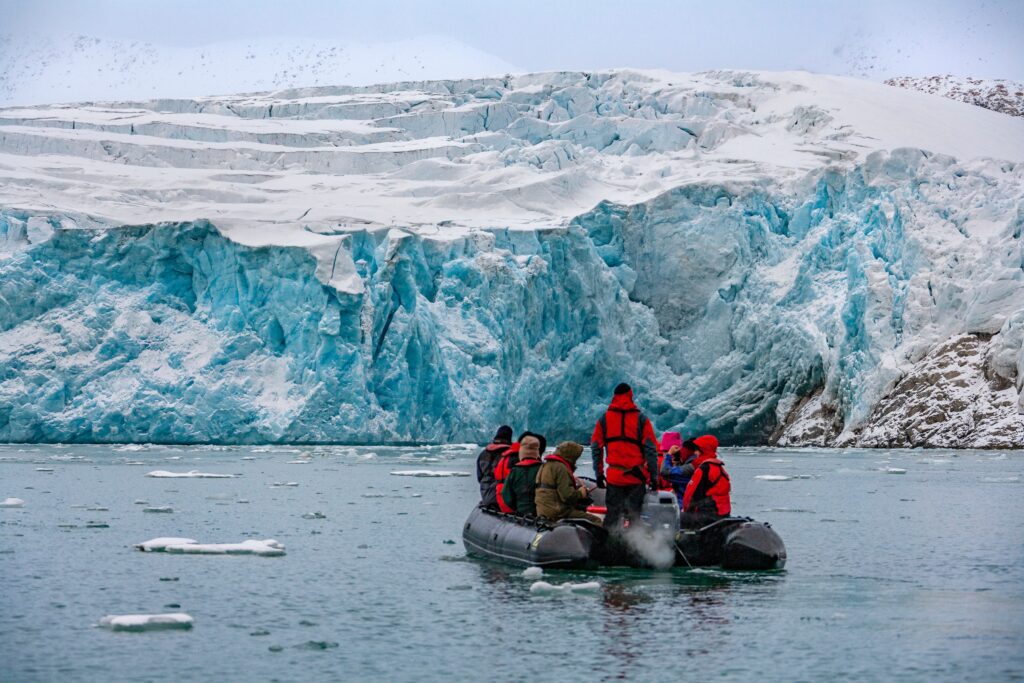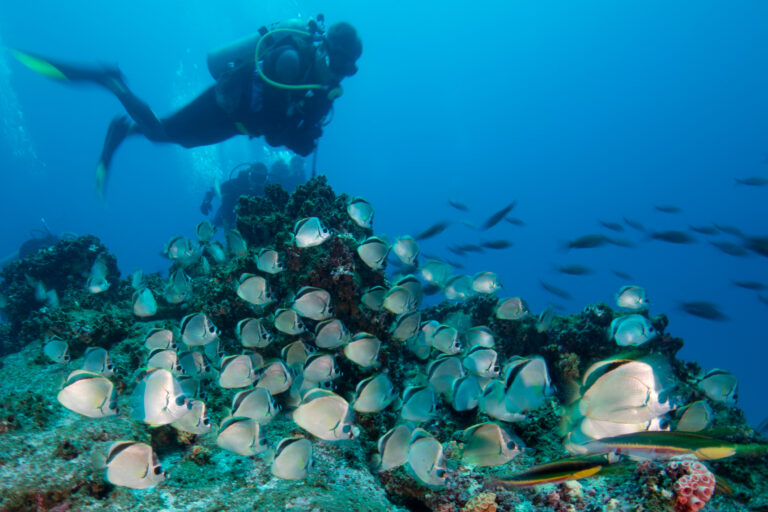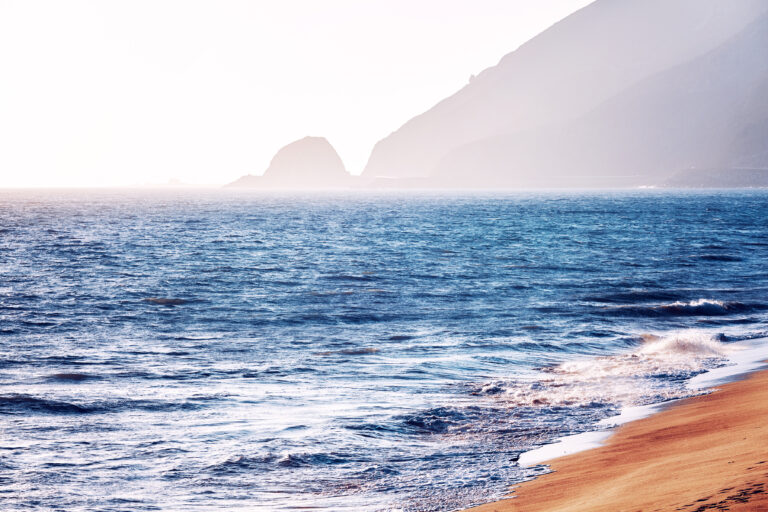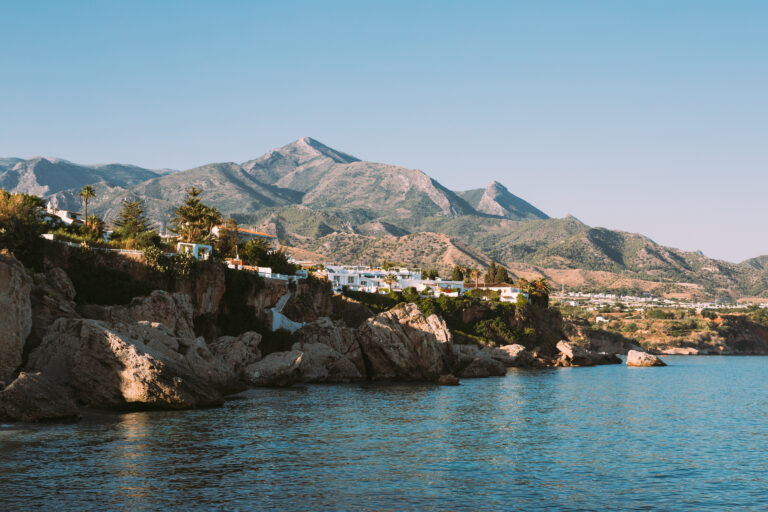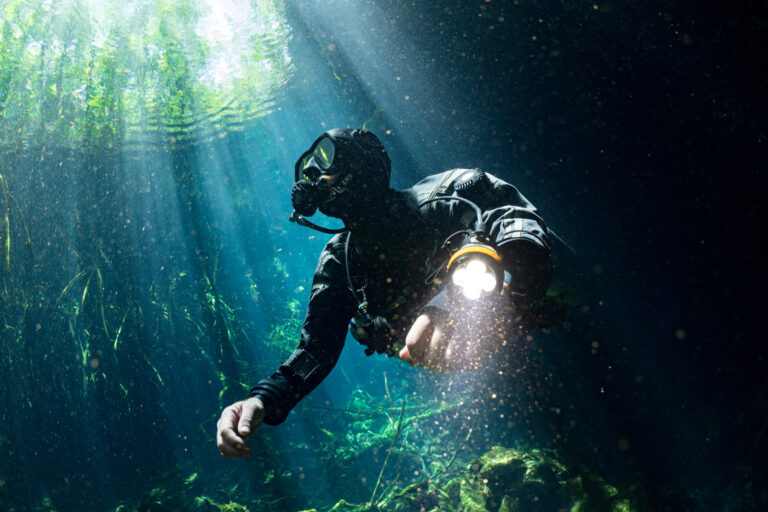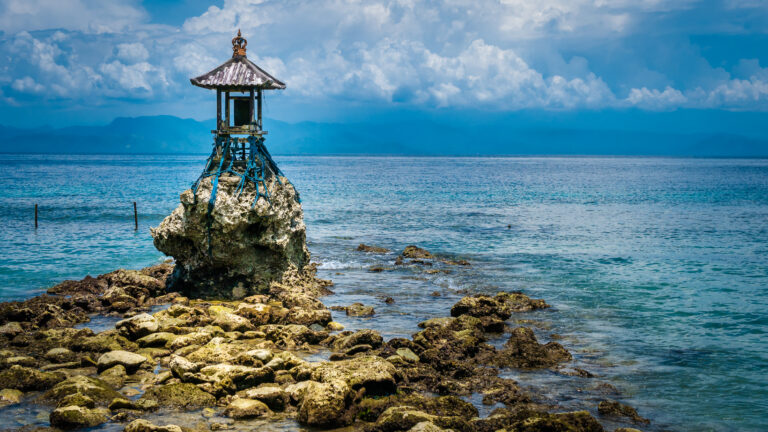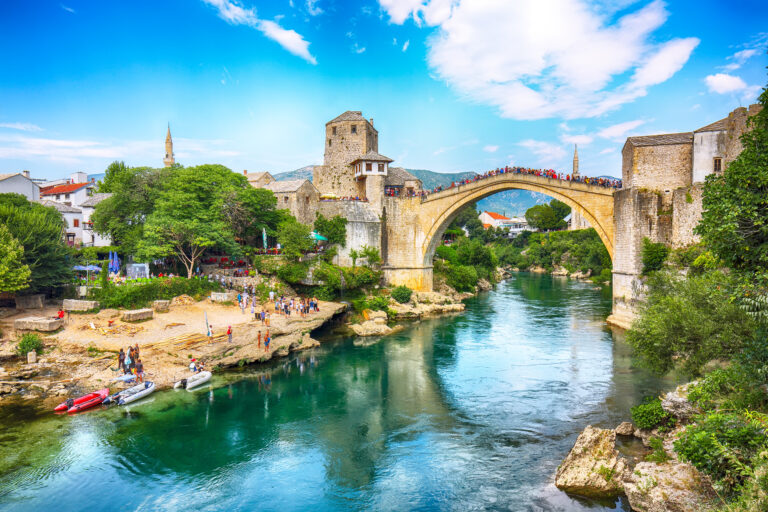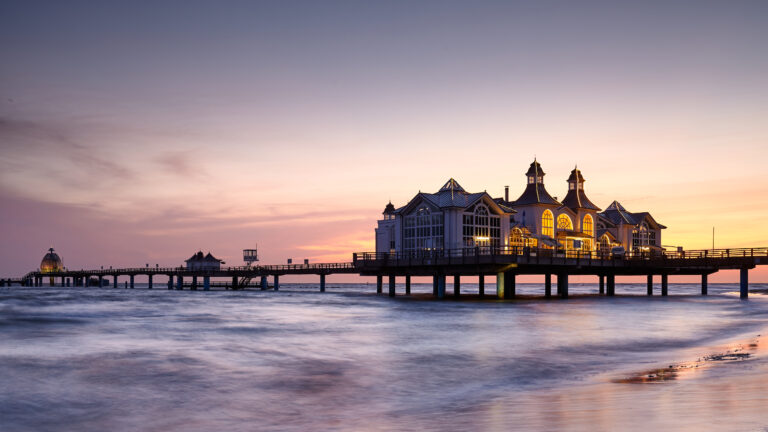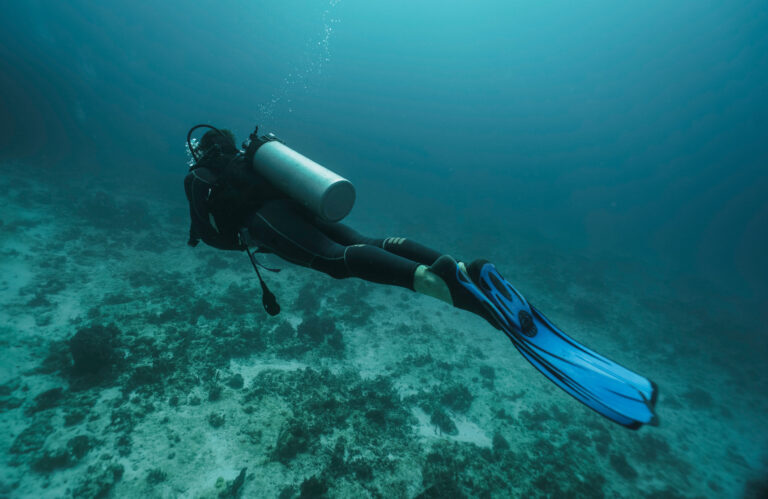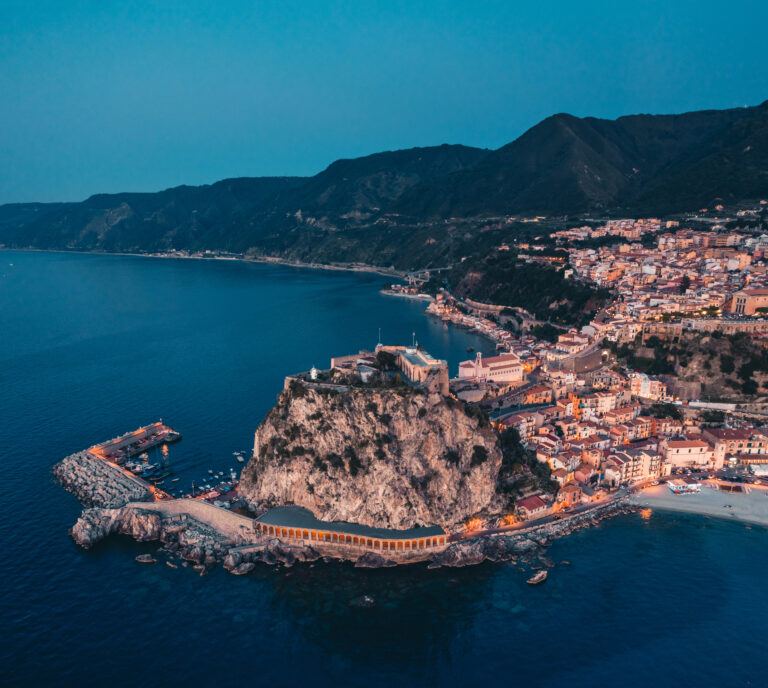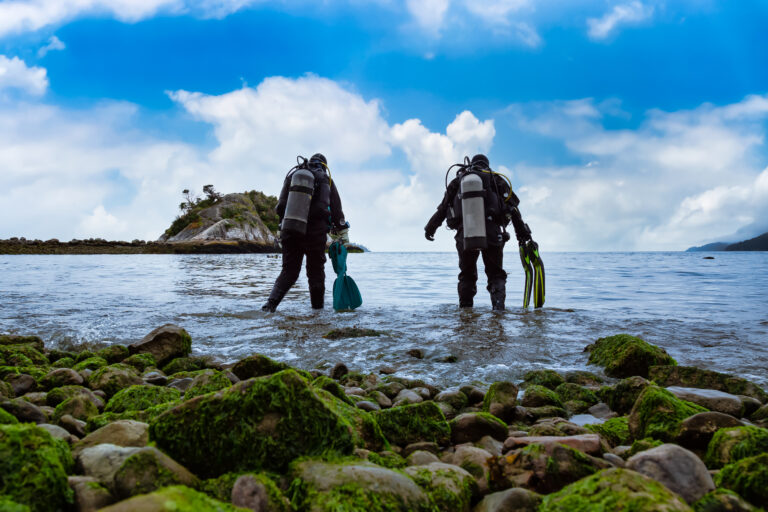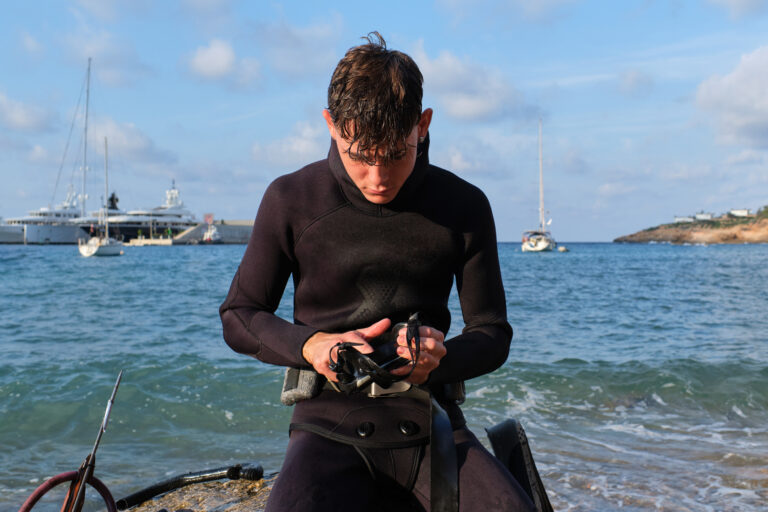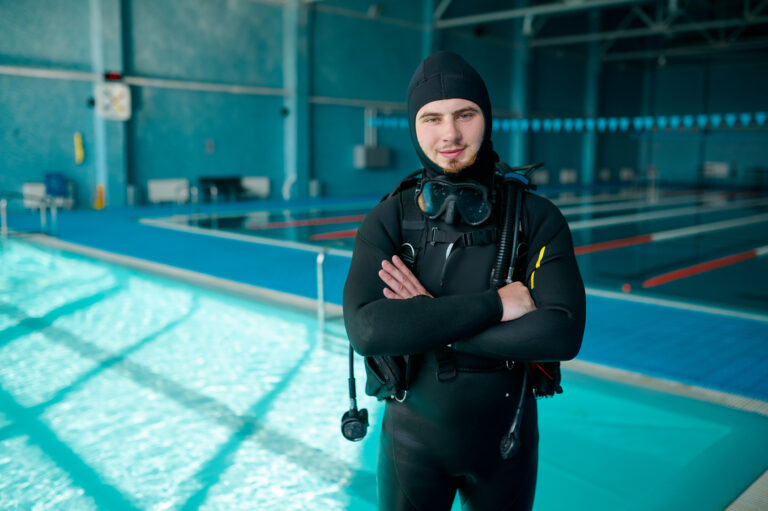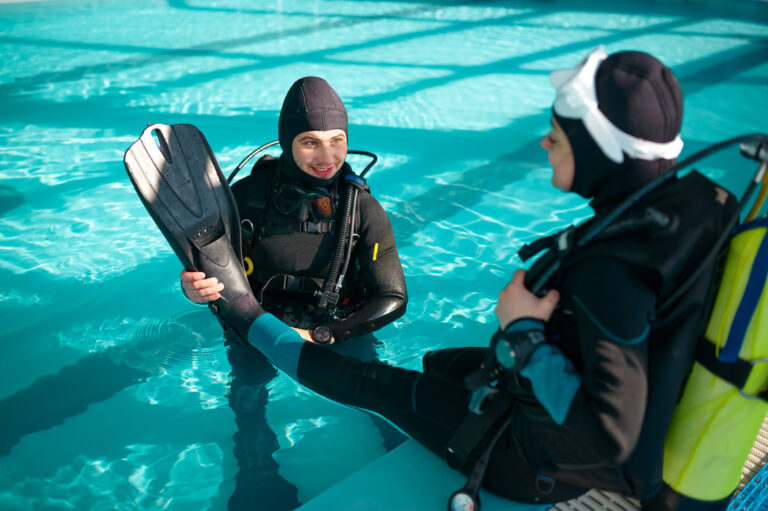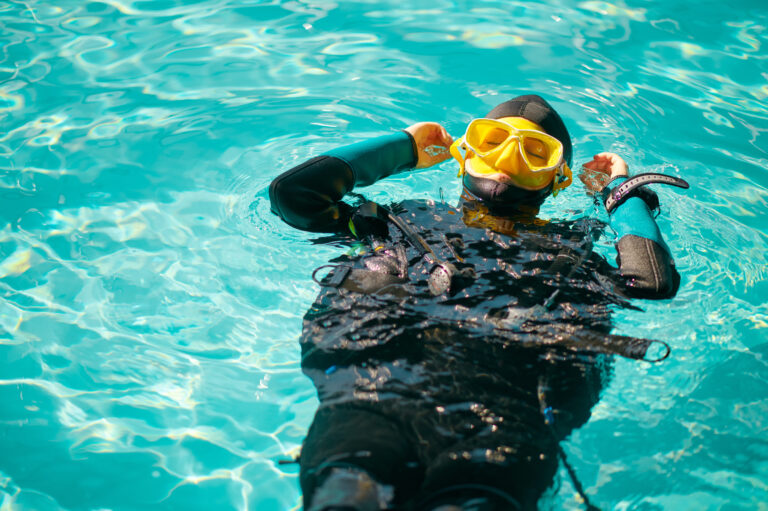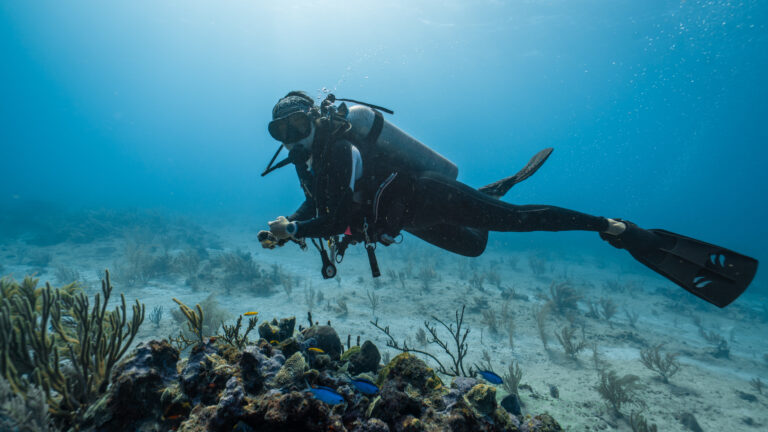SCUBA DIVERS’ TRAVEL GUIDE TO Svalbard
If you’re looking for an Arctic adventure unlike any other, Svalbard is the destination for you. This Norwegian archipelago is one of the world’s northernmost inhabited areas, where you can dive among glaciers, icebergs, and stunning marine life. Svalbard offers a unique opportunity to explore the underwater wonders of the polar region, where you can encounter Arctic foxes, bearded seals, walrus, beluga whales, and even polar bears on the surface, and anemones, corals, sea slugs, spider crabs, and rare fishes below. Svalbard’s dive sites are mostly shallow and accessible, but they require special equipment and skills to handle the cold and challenging conditions. You’ll need a dry suit, a hood, gloves, and a reliable dive operator to guide you through this icy wonderland. Svalbard is not for the faint of heart, but for those who dare to dive here, it’s an unforgettable experience that will leave you breathless.
LOCATION AND GEOGRAPHY
Nestled deep within the Arctic Circle, Svalbard is an archipelago that boasts a stark and dramatic landscape, offering a unique scuba diving experience amidst the world’s northernmost inhabited regions. This remote Norwegian territory, located about halfway between mainland Norway and the North Pole, is characterized by rugged mountains, sweeping glaciers, and frozen tundra. The waters surrounding Svalbard are frigid and teeming with Arctic marine life, providing a rare opportunity to dive in a polar environment. The archipelago’s position at the confluence of the Atlantic and Arctic Oceans creates nutrient-rich currents that attract a diverse array of underwater species. Divers in Svalbard can explore ice floes, witness the ethereal beauty of icebergs from below the surface, and encounter creatures such as seals, walruses, and the occasional polar bear from a safe distance. The extreme latitude also means that during the summer months, divers can experience the surreal phenomenon of diving under the midnight sun, with 24 hours of daylight illuminating the underwater world.
VISA AND ENTRY REQUIREMENTS
Before embarking on your scuba diving adventure to the remote and majestic archipelago of Svalbard, it is crucial to understand the visa and entry requirements. Svalbard is a part of Norway, but it maintains an open immigration policy, meaning that no visas are required for entering the islands, and there are no immigration controls for arriving travelers. However, if you’re traveling through mainland Norway or other Schengen countries to reach Svalbard, you must comply with the standard Schengen visa regulations. It’s important to note that even though Svalbard is visa-free, you must have the means to support yourself and a return ticket, as the governor of Svalbard can deny entry to those who do not meet these requirements. Additionally, ensure your passport is valid for the duration of your stay. Always check the latest travel advisories and entry requirements before your trip, as policies can change.
GETTING TO Svalbard
Getting to the remote archipelago of Svalbard, a scuba diving gem located well within the Arctic Circle, requires some planning. The most common entry point is through Norway, with regular flights from Oslo or Tromsø to Longyearbyen, Svalbard’s largest settlement, operated by airlines such as SAS and Norwegian. During the summer months, there are also occasional charter flights from other European destinations. Once you arrive in Longyearbyen, the stark beauty of the Arctic awaits, with its unique underwater experiences featuring ice diving, vibrant kelp forests, and an array of Arctic marine life. It’s essential to book your travel well in advance, especially considering the limited flight schedules and the need for specific cold-water diving gear. Keep in mind that all visitors to Svalbard must ensure they have adequate travel insurance, as the remote nature of the destination can lead to costly evacuations or medical care if required.
BEST TIME TO DIVE
The best time to scuba dive in the remote and rugged archipelago of Svalbard is during the brief Arctic summer, from June to September, when the midnight sun bathes the landscape in a surreal, perpetual daylight. During these months, the ice recedes enough to allow access to the dive sites, and the water temperatures, though still chilly, range from 2°C to 7°C (35°F to 45°F), making it essential to don a drysuit for thermal protection. Visibility can be impressive, often exceeding 30 meters (100 feet), particularly in July and August. Divers are rewarded with a unique underwater experience, encountering kelp forests, icebergs, and a variety of Arctic marine life, including seals and the occasional walrus. It’s important to note that Svalbard’s diving is for the adventurous and experienced, as the challenging conditions require advanced diving skills and cold-water experience.
ACCOMMODATION OPTIONS
Accommodation options in Svalbard cater to a range of preferences, from the adventurous diver seeking a rugged experience to those desiring comfort after a day beneath the waves. In Longyearbyen, the archipelago’s largest settlement, divers can find a variety of hotels and guesthouses that offer modern amenities and easy access to local dive shops and expeditions. For a more immersive Arctic experience, some opt for eco-friendly lodges or refurbished historical accommodations that provide a unique glimpse into the region’s past. Those looking for solitude and direct access to the untouched wilderness might consider staying in remote cabins or aboard liveaboard vessels that specialize in diving excursions, allowing them to wake up at new dive sites each day. Regardless of where you choose to stay, it’s essential to book well in advance, especially during the peak summer months, as the limited number of options can fill up quickly in this remote and enchanting destination.
DIVE OPERATORS AND DIVE SHOPS
In the remote and rugged archipelago of Svalbard, dive operators and dive shops are the gateways to an underwater world as pristine as it is challenging. Given the extreme Arctic conditions, these specialized establishments are not only equipped with the necessary gear to brave the icy waters but are also staffed by seasoned professionals adept at navigating the unique environment. Divers can expect to find services offering dry suit rentals, guided dives to explore the mesmerizing kelp forests, and ice diving adventures that reveal the hidden beauty beneath the ice floes. Due to the limited number of operators and the environmental sensitivity of the region, it is essential to book well in advance and be prepared for a dive experience that prioritizes safety and ecological responsibility. Whether you’re an experienced cold-water diver or looking to expand your diving repertoire, Svalbard’s dive shops provide the expertise and equipment needed to explore one of the planet’s final frontiers beneath the waves.
TRANSPORTATION WITHIN Svalbard
Transportation within the remote archipelago of Svalbard, a prime destination for adventurous scuba divers seeking to explore Arctic waters, is as unique as the destination itself. The primary gateway to Svalbard is through Longyearbyen, where the majority of services, including dive operators, are based. Within Longyearbyen, getting around is straightforward with options such as taxis, bicycles, and even walking for short distances. However, reaching dive sites often requires specialized transport due to the rugged terrain and the presence of polar bears. Boats are the main mode of transportation for divers to access the icy waters, with many operators offering guided trips on rigid inflatable boats (RIBs) or larger vessels equipped for the harsh Arctic conditions. In winter, snowmobiles may also be used to traverse the frozen landscape for ice diving excursions. It’s essential to arrange transportation with experienced local operators who are familiar with the unique challenges of the environment to ensure safety and access to the best dive spots around the islands.
CURRENCY AND PAYMENT METHODS
When planning a scuba diving trip to the remote and rugged archipelago of Svalbard, it’s important to note that the Norwegian Krone (NOK) is the official currency. While some larger establishments in the main settlement of Longyearbyen may accept major credit cards such as Visa and MasterCard, it is advisable to carry a sufficient amount of local currency for smaller purchases, especially when dealing with dive operators or in more remote locations where electronic payment systems might not be as reliable. ATMs are available in Longyearbyen, but their scarcity in other parts of the archipelago makes it prudent to withdraw cash before venturing beyond the town. It’s also worth mentioning that due to Svalbard’s unique tax status, goods and services can be less expensive here than on mainland Norway, making it a slightly more budget-friendly destination for divers. Always check with your specific dive operator regarding their preferred payment methods before your journey to ensure a smooth and enjoyable underwater adventure in the Arctic waters.
LANGUAGE AND COMMUNICATION
When embarking on a scuba diving adventure to the remote and rugged archipelago of Svalbard, it is essential to consider the language and communication nuances of this Arctic destination. Norwegian is the official language, reflecting the islands’ governance by Norway, and English is widely spoken, particularly within the tourism industry and among the international research community present there. As a diver, you’ll find that dive operators are typically proficient in English and often other European languages, ensuring clear communication during briefings and excursions. However, it’s worth noting that the universal language of scuba diving is non-verbal, relying on hand signals to convey messages underwater where spoken words are not an option. Familiarizing yourself with these signals, as well as any region-specific gestures, is crucial for a safe and enjoyable dive experience in the pristine, icy waters of Svalbard. Whether you’re interacting with locals, dive masters, or fellow explorers, a respectful and patient approach to communication will enhance your Arctic diving journey.
LOCAL CULTURE AND ATTRACTIONS
Svalbard, a remote archipelago situated well within the Arctic Circle, offers a unique blend of stark natural beauty and a rich tapestry of polar history and culture. Visitors to this icy outpost are greeted by the rugged charm of Longyearbyen, the largest settlement, where colorful houses stand in stark contrast to the glacial backdrop. The local culture is deeply intertwined with polar exploration and the hardy spirit of survival in extreme conditions. Attractions such as the Svalbard Museum provide insights into the region’s history, including its whaling heritage and the era of coal mining that shaped the community. The indigenous Svalbard reindeer roam freely, and the chance to spot a polar bear in the wild adds a thrilling edge to the cultural experience. Amidst the stark and hauntingly beautiful landscapes, the Midnight Sun and Northern Lights offer celestial spectacles that are integral to the local way of life. Svalbard’s small but welcoming population, primarily composed of Norwegians and Russians, maintains a vibrant cultural scene with art galleries, music festivals, and a surprisingly diverse culinary offering that often features local game and seafood. Here, the allure of the deep Arctic Ocean is matched by the cultural richness that thrives despite, or perhaps because of, the challenging environment.
CULTURAL ETIQUETTE AND TIPS
When embarking on a scuba diving adventure in the remote and pristine waters of Svalbard, it is essential to approach the local culture with respect and mindfulness. The archipelago, situated well within the Arctic Circle, is home to a small, tight-knit community that values environmental conservation and sustainable living. Visitors should be aware that the impact of tourism is a subject of local concern; hence, it is crucial to follow all guidelines related to wildlife encounters, waste disposal, and interaction with natural habitats. As a sign of respect, take the time to learn a few basic phrases in Norwegian, the official language, even though many inhabitants speak English. Dress modestly and practically for the cold climate, and always show deference to local customs and traditions. When engaging with the community, whether it’s conversing with your dive guide or interacting with residents, exhibit patience, politeness, and a genuine interest in their unique way of life. Remember that Svalbard operates under strict regulations to protect its fragile ecosystem, so adhere to all rules, and embrace the opportunity to learn from this remarkable Arctic environment and its custodians.
LOCAL LAWS AND REGULATIONS RELEVANT TO TOURISTS
When planning a scuba diving trip to the remote and pristine waters of Svalbard, it is crucial to familiarize yourself with local laws and regulations designed to protect both the diver and the fragile Arctic environment. Svalbard, governed by Norway, adheres to strict environmental laws; hence, all diving activities must respect the Svalbard Environmental Protection Act. Divers should be aware that collecting any biological material, including shells and plants, is prohibited, as is disturbing the wildlife, which includes seals and polar bears. It is mandatory to inform the Governor of Svalbard about any diving expeditions, and due to the potential presence of polar bears, carrying appropriate safety equipment, such as a rifle for protection, is required when diving in remote areas. Additionally, as Svalbard is within a demilitarized zone, any discovery of historical artifacts, especially from World War II, must be left undisturbed and reported to local authorities. Given the extreme conditions and the presence of potentially dangerous wildlife, it is highly recommended to dive with local, experienced guides who are familiar with the region’s unique regulations and can ensure a safe and legally compliant diving experience.
SAFETY TIPS AND EMERGENCY CONTACTS
When planning a scuba diving trip to the remote and captivating waters of Svalbard, prioritizing safety is paramount due to the region’s extreme conditions and isolated location. Always dive with a certified, local guide familiar with the area’s unique challenges, such as icy water temperatures, strong currents, and the presence of polar wildlife. Ensure that you have the appropriate thermal protection, including a dry suit and proper undergarments, to prevent hypothermia. Familiarize yourself with the use of dive signals and carry a reliable communication device for surface support. It is crucial to have a solid understanding of your dive plan, including depth, time, and emergency procedures. Due to Svalbard’s remoteness, medical facilities are limited, so divers should be in good health, have recent dive medical clearance, and carry a comprehensive first-aid kit, including oxygen. In case of an emergency, contact the local rescue coordination center immediately; the Governor of Svalbard operates a 24-hour service reachable at +47 79 02 12 22 for emergencies. Additionally, ensure that you have the contact information for the nearest hyperbaric chamber, which may be located at Longyearbyen Hospital, and have evacuation insurance that covers medical treatment and transportation in this remote region. Always register your dive plans with your tour operator or local authorities and keep a vigilant eye on weather forecasts, as conditions can change rapidly in the Arctic environment.
HEALTH AND TRAVEL INSURANCE
When planning a scuba diving trip to the remote and rugged archipelago of Svalbard, it is crucial to secure comprehensive health and travel insurance that covers extreme sports or adventure activities. Given Svalbard’s isolated location in the Arctic Circle, access to medical facilities is limited, and any necessary medical evacuation can be extraordinarily expensive. Ensure that your policy includes coverage for hyperbaric treatment in the unlikely event of decompression sickness, as the nearest decompression chamber may be a significant distance away. Additionally, due to the harsh and unpredictable Arctic environment, trip cancellation and interruption insurance is highly recommended to protect against the financial impact of weather-related delays or the rare occurrence of polar bear encounters disrupting your plans. Always carry proof of your insurance and emergency contact numbers with you, and verify that your policy is accepted by local operators before embarking on your Svalbard diving adventure.

